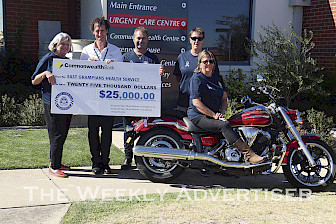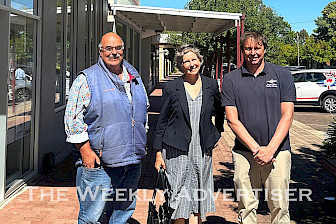“It’s important those visiting Victoria’s national parks know their limitations and plan their activities accordingly,” he said.
“Taking ample water and food for the trek and monitoring your activity in the 24 hours leading up to your walk can help limit your risk of requiring an emergency response.
“Don’t ration your water – instead ration your exertion and avoid walking in the late afternoon, which is often the hottest time of the day.”
Grampians National Park chief ranger Charlie Richardson said the natural environment could be unpredictable, and a bit of planning and foresight could make all the difference.
“Fences and barriers are there to keep you safe and to protect our environment and climbing barriers to get a perfect selfie or to look for a better view can lead to serious injury,” he said.
“Visitors should stay on marked tracks and designated visitor areas.
“Walking off track damages sensitive vegetation, compacts the ground and can spread plant diseases.”
Bushwalkers can also mitigate their risk by packing a map and compass, tracking their route through GPS, or by familiarising themselves with emergency markers designed to pinpoint their location in the event an emergency extrication is required.
People are advised to do the following if they are hiking or bushwalking:
• Keep away from hazardous trees, especially if conditions are windy.
• Wear appropriate footwear and clothes for the conditions expected, even if people think they won’t need it.
• Have communications equipment that will work where people are going, such as a satellite phone if walking for extended periods across low coverage areas. Consider radio backup, a Personal Locator Beacon, a copy of any important phone numbers, a phone charger, battery pack or other communications supplies. Tell someone what your plans are.
• Bring three to four litres of water a person.
• Pack what would be needed to be ready for an emergency.
Hikers, bushwalkers, and those planning to camp, are also encouraged to stay informed and monitor emergency warnings through the VicEmergency app, website and hotline 1800 226 226, and listen to emergency broadcasters such as ABC local radio, designated commercial radio stations and TV news stations.
People are reminded to call 132 500 if they require emergency assistance from VICSES, and Triple Zero in life-threatening emergencies. For more information visit www.ses.vic.gov.au/plan-and-stay-safe/on-holidays.
People can also check the Parks Victoria website for changes of conditions at www.parks.vic.gov.au/coc-listing.
The entire March 27, 2024 edition of The Weekly Advertiser is available online. READ IT HERE!
The entire March 27, 2024 edition of AgLife is available online. READ IT HERE!






